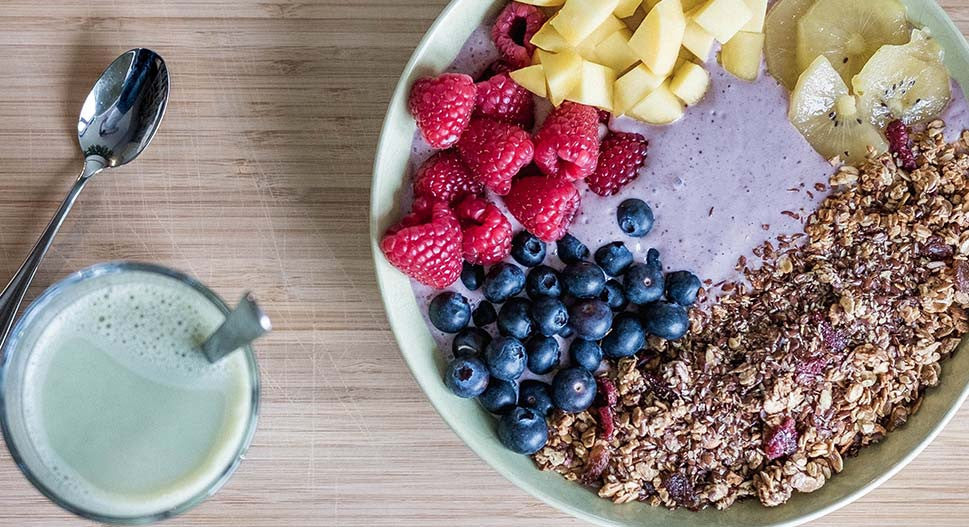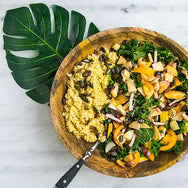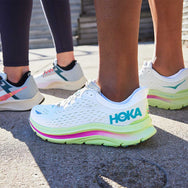‘Superfood.’ This buzzword gets tossed around a lot. It started with the humble blueberry, and now we have so-called ‘superfoods’ popping up everywhere we look.
From Matcha and Morninga to Cacao and Kombucha, many of the latest superfoods have high promises and high price tags to boot. But, is there any truth in the many ‘superfood’ claims? Or is it a misleading label that consumers have fallen for?
How does a food reach ‘superfood’ status?
All foods contain some nutrients. However, some foods are thought to have such a high content of certain nutrients that offers additional health benefits beyond basic nutrition, that they are referred to as 'superfoods'.
Despite its common use, there is no official scientific definition of the term 'superfood'. However they are generally some combination of the following:
- Contain phytochemicals that have potent antioxidant properties (measured by Oxygen Radical Absorbance Capacity ORAC Value)
- Rich in vitamins and minerals
- Contain significant amounts of omega-3 fatty acids or monounsaturated fatty acids
- High in fibre
- Low in calories
With no superfood regulation to indicate whether or not a food is actually ‘super’, it seems the term is here to stay.

2017 ‘Superfood’ favourites
- Matcha: Matcha is the finely ground powder made of whole, high-grade green tea leaves which is thought to have significantly higher amounts (3 x) of antioxidants than regular green tea. Claims link the antioxidants and amino acids (including L – Theanine) to increased energy levels, reduced stress and improve cognition. Half a teaspoon of matcha powder can be added to your chosen drink hot or cold or if you’re feeling adventurous added to your porridge, salad dressing or your baking! There have not been many direct studies on matcha. However because matcha is a concentrated form of green tea, it can be assumed that the benefits of green tea would be obtained from matcha as well, although more research studies are needed to be really validate all the claims on matcha itself.
- Turmeric. This super-spice is one of the most studied ‘superfoods’. Curcumin, the active ingredient found in turmeric, is thought to be anti-inflammatory and therefore has been linked to being beneficial for conditions such as heart disease, osteoarthritis, and Alzheimer’s for example. Bioavailability is thought to be improved in the presence of black pepper. Traditionally used more in cooking, you can now find turmeric drinks in all shapes and sizes. The scientific evidence to support the role of curcumin in inhibiting the inflammatory process continues to mount. However there is still no clear recommendation for curcumin dosage. More research is needed to improve bioavailability of supplements and determine specific recommendations for curcumin.
- Cacao. It might sound like the posh version of your regular hot chocolate – however this actually refers to raw cacao nibs (essentially pieces of raw chocolate without the sugar or milk). These little nibs are packed with flavonoids, a type of antioxidant shown to lower blood pressure. Cacao is also packed with magnesium, which is an anti-stress mineral. Studies on cacao extracts (note not chocolate!) have shown promising results. Several systematic reviews and meta-analyses have found cacao consumption to be associated with a lower incidence of high blood pressure and stroke as well as a reduced risk for all cardiovascular disease. Dark chocolate products provide you with a higher percentage of cocoa solids (> 70%). However you would have to eat 1000 calories of it a day to get enough benefit… which kinda cancels out the benefits.
- Moringa. A tropical leaf that’s ground into powder and often added to smoothies and juices. Moringa powder has three times the iron in spinach and twice the calcium of milk. Iron is needed to make red blood cells. These are the cells that carry oxygen through the blood. A lack of iron can lead to anaemia. A lot of the research done on Moringa has been in-vitro (lab or test tube based). There are however no human studies that show the effects of moringa and its impact on anaemia.
- Kombucha. If you are yet to hear of Kombucha don’t worry, photos of it will be all over your news feed soon! It is a fermented green tea that has been around for thousands of years in China. Kombucha provides a good dose of “good” bacteria (probiotics), antioxidants and polyphenols. However there have been no human studies done to back up the claims that Kombucha is linked with boosting your immune system and improving digestion and detoxification. As with the other superfoods, most of the evidence supporting Kombucha’s potential benefits is limited to rodent studies. A note of warning - poor quality Kombucha (i.e. fermented too long) can be toxic to humans.
- Boabab. This prized African fruit is said to have 10 times the fibre of apples, six times the vitamin C of oranges, two times the calcium of milk and four times the potassium of bananas. Boabab is also very high in fiber (45g/100g). Fibre helps keep you fuller for longer and maintain energy levels. Claimed health benefits include improving digestive health, boosting immune support and improving skin health. There is however, limited research on the consumption of baobab and these claims. As with many ‘superfoods’ more research is needed to solidify the claims.

So should we be seeking out these ‘superfoods’?
Well, it depends. If you appreciate that most ‘superfoods’ get more attention than warranted, but you get excited about adding new and interesting foods into your diet (and you can afford to) then go for it! Most ‘superfoods’ are undoubtedly nutritious choices. Just don't expect any miracles.
If you're on a tight budget, then the best thing you can do is to ensure that you consume a varied diet containing plenty of vegetables and fruit.
Other everyday foods that are more reasonably priced and a great addition to any diet, include:
- Plain yogurt (look for active bacterial cultures)
- All berries
- Wholegrain oats and grains (brown rice, barley)
- Fresh herbs and spices
- Eggs
- Beetroot
- Almonds and other nuts
- Flaxseeds and pumpkin seeds
- Dark green and calciferous vegetables ( spinach, broccoli, green beans, cauliflower, brussel sprouts)
Summary
Whether you chose to eat ‘superfoods’ or not is entirely up to you. ‘Superfoods’ are great, nutritious foods but remember you can get the same benefits from eating whole foods that aren’t glorified ‘superfoods’. Personally, I would rather eat a wide variety of ‘ordinary’ foods to ensure I’m getting a great mix of nutrients, vitamins and minerals. It also means I have some cash leftover to spend on other things…like nice yoga pants!
References
- Weiss D, Anderton C. Determination of catechins in matcha green tea by micellar electronkinetic chromatography. Journal of Chromatography A. 2003.Issue 1.
- Shehzad A, Rehman G, Lee Y. Curcumin in inflammatory diseases. Biofactors. 2013;39(1):69-77.
- Gupta SC, Patchva S, Aggarwal BB. Therapeutic roles of curcumin: lessons learned from clinical trials. AAPS J. 2013:15(1):195-218
- Buitrago-Lopez A, Sanderson J, Johnson L, et al. Chocolate consumption and cardiometabolic disorders: systematic review and meta-analysis. BMJ. 2011;343:d4488
- Crozier SJ, Preston AG, Hurst JW, et al. Cacao seeds are a “super fruit”: a comparative analysis of various fruit powders and products. Chem Cent J. 2011;5:5.
- Lakshmipriya G et al. Moringa Olefera: A review on nutritive importance and its medicinal application. Food Science & Human Wellness. 2016. Pages 49 - 56
- Chadare F, Linnemann A, Hounhouigan J, Nout M, Van Boekel M. 2009. Baobab food products: a review on their composition and nutritional value. Crit Rev Food Sci Nutr. 49





























































